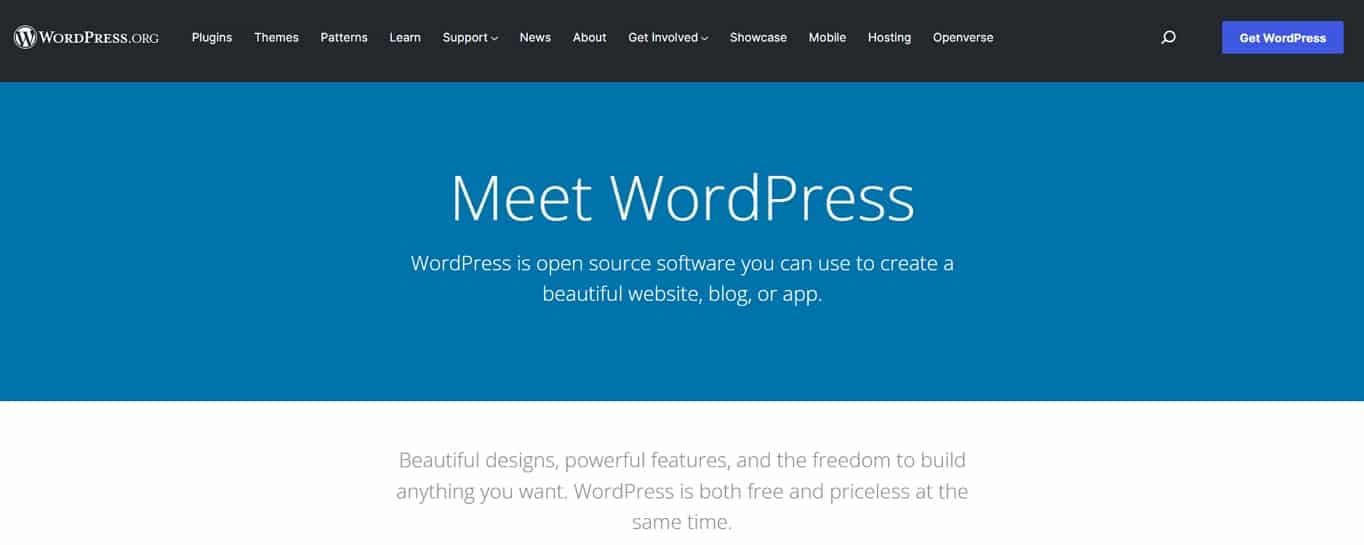When you want to build an eCommerce website, at some point, you might wonder:
“Shopify or WordPress, which one is better?”
While both platforms allow you to build successful online stores, they are also very different.
In this article, we break down the main distinctions in pricing, installation, ease of use, and capabilities for both Shopify and WordPress. All of these are essential factors you should consider before investing in a certain eCommerce platform.
Let’s take a closer look at both options and find out which suits your online store project the best.
Is WordPress for Everything, Including an eCommerce Site?
We’ve always been avid WordPress fans, and our go-to advice whenever anyone needed a website for any purpose was, “Hey, why not WordPress?”
Looking through what’s possible with Shopify and how easy it all is, even we started having second thoughts.
WordPress is surely awesome as a website platform. It can easily cope with anything you throw at it and make your site accessible and available for the whole world to see.
At the same time, an eCommerce store is a very specific kind of animal, and it’s very different from a standard blog or a website.
WordPress is built around content – content that is meant to be consumed for free, more or less. You can publish blog posts, videos, pictures, and etc., but the main principle is that it’s all available to whoever happens to stumble upon the URL.
The reality of eCommerce stores is different.
What they offer sits behind a paywall. The whole site needs to be careful when handling the customer’s crucial data (like credit cards, personal info). It needs to be secure. To top it all off, it also needs to be able to handle incoming orders, process them, and make sure that nothing falls through the cracks along the way.
In other words, there’s a lot of stuff that’s different about eCommerce stores compared to standard publishing platforms.
At that point, even we have to be ready to accept the fact that WordPress isn’t perfect for everything. Sometimes, you just need a platform that’s been built for the purpose of handling an eCommerce store.
The Main Difference Between Shopify and WordPress
In a sentence, the main difference between Shopify and WordPress is that Shopify is an online tool/service, whereas WordPress is stand-alone software that you need to install yourself.
In order to use Shopify, all you have to do is go to Shopify.com and sign up to create an account. Once done, you only need to go through a quick setup, and your eCommerce store is up and running.
To use WordPress as your eCommerce platform, on the other hand, requires a lot more steps:
- First, you need to buy a domain and a web hosting account where you can have the default version of WordPress installed.
- You need to pick a theme (design) for your website, plus a handful of plugins to take care of SEO, social media integration, etc.
- After that, you need a plugin like WooCommerce to provide you with all the eCommerce features (those are not built into WordPress).
- Finally, you need to go through the configuration process of your eCommerce store (the store details, payment gateway integrations, products, etc.). Those can take a while of their own too.
Last but not least, with Shopify, you also get support, which means that should you ever encounter any trouble with the platform, you can simply contact the support team, and they will (likely) solve it.
With WordPress, there’s no support, per se.
Think of it this way, Shopify is like going to IKEA, buying a table off the shelf, and then just assembling it at home. WordPress is like going to the hardware store, buying planks, nails, glue, tools, and then coming home and building the table yourself.
Shopify – What Is It?
- An all-in-one eCommerce solution/tool. It allows you to build a functional eCommerce store from scratch, without a designer’s or developer’s help.
- There’re no coding skills required to use Shopify.
- It’s a paid tool – from $29 to $299 per month.
- It allows you to sell whatever you wish (goods, services, products, both digital and physical, as well as dropship).
- Use it offline and online (you can use it as your online store, but also use something called Point of Sale with Shopify, which is their system for retail stores that allows you to integrate your on-location store with your setup in Shopify).
- More than 100+ online store designs to choose from (some of them paid).
- Every new site gets a custom subdomain for free – for example, YOURSTORE.shopify.com.
- There’s 24/7 support.
WordPress (WooCommerce) – What Is It?

- An all-in-one website software. It allows you to build any kind of website, provided that you can handle the slightly technical setup – involving installing the software itself, installing plugins, installing a theme, and then installing an eCommerce plugin to handle the store operations.
- Some website-building skills are required. Depending on the customizations that you want to perform, you might need coding or design skills as well.
- The WordPress software is free. In order to use it, you need to choose a web host and buy a domain name. When all is put together, you can get started with WordPress for about $5/month.
- Great content management features.
- Thousands of themes/designs to choose from, both free and paid.
- Exceptional extension possibilities through plugins.
- No direct support, but a very helpful support community.
When Should You Use Shopify Over WordPress?
Shopify stands out as a tailor-made eCommerce solution for everyone. Whereby everyone, we mean people who might not have any website building or coding skills, yet still want to be able to create an awesome online store all by themselves.
The main benefit of working with Shopify is that you can get started in minutes and begin serving your first customers almost immediately.
Even setting the coding and website building skills aside – which you don’t need – you also don’t need to be entirely familiar with various realities of the eCommerce business itself. Shopify helps you set things like the inventory, taxes, shipping settings, and so on. In other words – it solves every last boring aspect of the business.
Secondly, Shopify is also a rather affordable solution. To get started, you need $29 a month. However, for that price, you get access to more than enough site designs and customization options. If any of the above describes you, go for Shopify. It also doesn’t matter whether you want to sell physical products, digital downloads, services, or even do dropship. Shopify can handle anything. The number of products you offer isn’t a factor either (whether it’s 1 or 1000). WordPress is a powerhouse. It’s nearly the perfect website platform, capable of running all kinds of websites. But there’s a catch. Or, a couple of catches, rather. What it all means is that WordPress is perhaps a solution for a bit more savvy user. You need to feel comfortable editing PHP files by hand, connecting to your server via FTP, and spending the afternoon in some settings panel. You can find alternative WordPress shopping carts here. About that last part: Right now, you might feel that customer support is not such a big deal. But keep in mind that it’s your business we’re talking about here. For example, if something happens that causes your site to go down, not having it online for the whole day can and will mean a serious hit to your business income. Also, a lot of stress while we’re at it. It’s those times when we tend to value customer support that’s operating 24/7! If the options above don’t satisfy your taste, we have an even shorter answer for you. Just keep in mind that it’s a huge oversimplification. In many scenarios, you’re better off following one of the options above. But if you want an uber-short answer then here it is: Our motives for that matter are twofold: Saving both time and money. Quite simply – if you already have a WordPress website running, then it’s always going to be quicker and cheaper to just add an eCommerce component to that website instead of building something new. On the other hand, if you don’t have a website yet, then it’s quicker and easier to go the other route and launch an eCommerce store with a specialized platform like Shopify. That’s all!
In-a-Nutshell: When to Use Shopify:
When to Use WordPress Over Shopify?
 That being said, the aforementioned WooCommerce is a great eCommerce plugin. It gives you all the features you might ask for, e.g. shopping carts, product catalogs, online payments, coupons, and so on. Most importantly, the plugin is free.
That being said, the aforementioned WooCommerce is a great eCommerce plugin. It gives you all the features you might ask for, e.g. shopping carts, product catalogs, online payments, coupons, and so on. Most importantly, the plugin is free.
In-a-nutshell: When to Use WordPress for eCommerce:
WordPress or Shopify?

